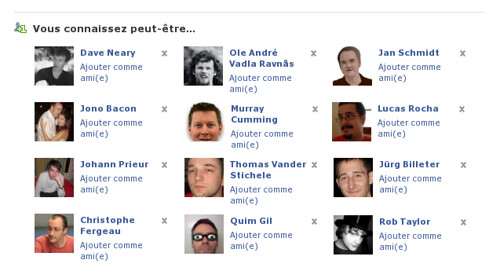I am proud to announce the release of libchamplain 0.3, the first development release toward 0.4. libchamplain is a map widget. It is the work of many months (as far as November) and many contributors since FOSDEM. Here is a short list of what you get:
- Support for proxies
- Support for custom map sources
- A way to list the available map sources
- Support for 2 new built-in map sources: Cycle Map and Osmarender
- A bunch of new function to allow more control on the UI
- A nicer, more flexible Marker API
- Nicer default markers: they are now grey, have rounded corners and cast a shadow!
- Notification when the view is loading content and when it’s done
- Support for locking down available zoom levels
- A more intelligent cache that can be purged
- Bindings (in the works): Perl, Python, C# and C++
Of course being a development release, the API isn’t entirely stable yet. For instance, the code surrounding the ChamplainMapSourceDesc introduced this weekend is subject to be reviewed in the next weeks.
Yet, this release is a big step forward introducing a lot of the desired features while leaving some for an upcoming release (such as the ability to draw lines on the map).
You can grab the tarball or clone the source code. You can read the NEWS or read about the API.
On a side note, libchamplain as been officially proposed as an external dependency for GNOME 2.28.













